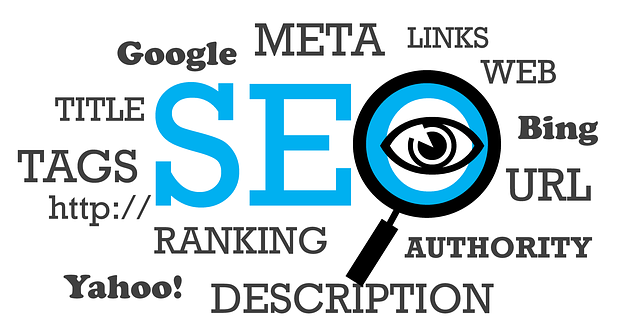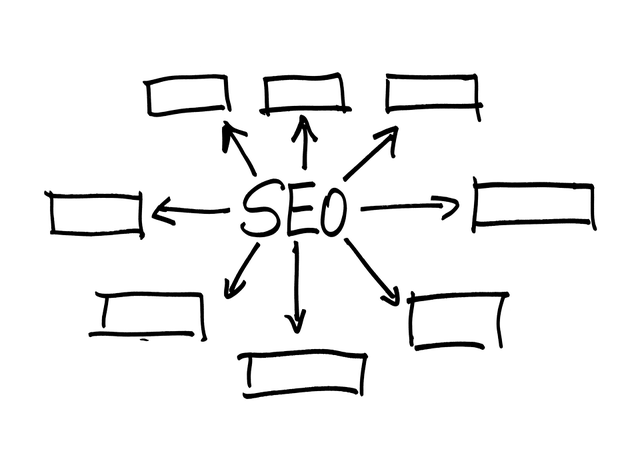Search Engine Optimization (SEO) is a process aimed at boosting website visibility and ranking on engines like Google by understanding and adhering to algorithm standards. This involves content optimization, mobile-friendliness, fast loading speeds, internal linking, high-quality backlinks, and user engagement signals. Keyword research using tools like Google Keyword Planner helps attract targeted traffic. On-page element optimization aligns content with search engine preferences, while mobile optimization and UX improvements enhance user experience and lower bounce rates. Technical aspects such as site navigation and indexing must be optimized, and mobile responsiveness is crucial in today's smartphone-centric web browsing environment. Regular analysis of SEO metrics is vital for maintaining relevance and securing higher rankings through SEO Tips for Ranking Higher.
In today’s digital landscape, effective SEO Tips for Ranking Higher are paramount for online visibility. This comprehensive guide navigates the essentials of Search Engine Optimization (SEO) and its profound impact on website rankings. From conducting keyword research to optimizing on-page elements, building high-quality backlinks, enhancing user experience, leveraging mobile optimization, and regularly analyzing SEO strategies, each section offers actionable insights. By implementing these SEO tips for ranking higher, businesses can harness the power of search engines, attract relevant traffic, and thrive in a competitive online environment.
Understanding Search Engine Optimization (SEO) and Its Role in Ranking

Search Engine Optimization (SEO) is a strategic process designed to enhance a website’s visibility and ranking on search engines like Google, Bing, or Yahoo. It involves understanding how search algorithms work and optimizing content, technical aspects, and user experience to meet these algorithm standards. By implementing effective SEO tips for ranking higher, websites can attract more organic traffic, increase relevant inquiries, and ultimately boost their online presence.
SEO plays a pivotal role in determining which websites appear at the top of search results pages (SERPs). It goes beyond just keywords; it encompasses a wide range of factors including on-page content optimization, mobile-friendliness, page loading speed, internal linking, high-quality backlinks, and user engagement signals. By aligning your digital properties with these criteria, you can significantly improve your chances of securing higher rankings, thereby driving more qualified leads and conversions.
Conducting Thorough Keyword Research for Relevant Traffic

Keyword research is a cornerstone of any successful SEO strategy, and it’s crucial for attracting the right traffic to your website. When implementing SEO tips for ranking higher, start by identifying keywords that align with your audience’s intent. Tools like Google Keyword Planner, SEMrush, or Ahrefs can help uncover relevant search terms with decent volume but less competition. This process ensures that your content targets interested users who are actively searching for solutions related to your niche.
By conducting thorough keyword research, you can tailor your content to match user queries at various stages of the buyer’s journey. Incorporate these keywords naturally into your website’s metadata, headings, and body text while maintaining readability. Relevancy is key; targeting keywords that closely mirror your content ensures search engines understand your page’s purpose, boosting its credibility and increasing the chances of ranking higher in search results.
Optimizing On-Page Elements for Search Engines

When it comes to SEO tips for ranking higher, optimizing on-page elements is a crucial step that shouldn’t be overlooked. This involves ensuring your website’s content and structure are aligned with what search engines like Google are looking for. One key aspect is keyword optimization—strategically placing relevant keywords in your titles, headings, meta descriptions, and throughout your content. But it’s about more than just stuffing keywords; the language should remain natural and focused on providing value to your audience.
Additionally, improving on-page elements means enhancing user experience (UX). This includes making sure your website is mobile-friendly, as most users now access content via smartphones. Fast loading times, clear navigation, and visually appealing design also play a significant role in both SEO tips for ranking higher and keeping visitors engaged. Search engines reward sites that offer a seamless browsing experience, so investing in these areas can significantly boost your online visibility.
Building High-Quality Backlinks for Authority and Trust

Building high-quality backlinks is a cornerstone of effective SEO tips for ranking higher. When reputable and relevant websites link to yours, it signals to search engines that your content is valuable and trustworthy. This authority and trust are crucial for improving your site’s visibility and credibility in the eyes of algorithms. Focus on acquiring links from diverse sources, such as industry leaders, blogs, and authoritative news outlets. Guest blogging, creating shareable content, and engaging with influencers can all help in this regard.
Remember, not all backlinks are created equal. The quality matters more than quantity. A single link from a highly respected website can carry more weight than multiple links from lesser-known sources. Additionally, ensure that the anchor text used for these backlinks is natural and varied, avoiding keyword stuffing. This approach not only enhances your SEO but also fosters long-term growth by establishing your site as a reliable resource in your industry.
Enhancing User Experience for Lower Bounce Rates

Improving user experience is a powerful SEO tip for ranking higher, as it directly influences bounce rates. When visitors find your website engaging and easy to navigate, they’re more likely to explore deeper into your content, leading to lower bounce rates. Optimizing for mobile devices, ensuring fast loading speeds, and creating intuitive site structures are key aspects of enhancing user experience. Mobile responsiveness is crucial because a significant portion of internet traffic comes from smartphones. Faster page loads keep visitors engaged; each second delay can lead to increased abandonment. A well-organized structure with clear menus and search functionality helps users find what they’re looking for quickly, reducing frustration and encouraging longer sessions.
By focusing on these user experience factors, you indirectly boost your website’s SEO. Search engines prioritize sites that offer a positive user experience, and Google’s algorithms consider bounce rates as a ranking signal. So, investing in UX design not only attracts visitors but also encourages them to stay and interact with your content, signaling to search engines that your site is valuable and relevant, thereby improving your chances of ranking higher.
Utilizing Technical SEO for Better Site Navigation

Effective SEO strategies go beyond just creating compelling content; they also involve optimizing your site’s technical aspects, which play a significant role in how search engines crawl and index your pages. Technical SEO ensures that your website is accessible, fast, and user-friendly, all of which contribute to better rankings in search results.
One key area to focus on is site navigation. A well-structured site with clear hierarchies helps search engine bots understand your content’s relevance and importance. Implement a logical site architecture, use descriptive anchor text for links, and ensure your sitemap is up-to-date and easily accessible. These practices enable efficient crawling, leading to improved indexing and, ultimately, higher rankings in the organic search results for your targeted keywords.
Leveraging Mobile Optimization for a Growing User Base

In today’s digital era, mobile optimization is no longer an option but a necessity to enhance user experience and accessability. As a growing user base relies heavily on smartphones for web browsing, leveraging mobile-friendly strategies becomes a powerful SEO tip for ranking higher. Ensure your website is responsive, with fast loading speeds and seamless navigation across all devices. Optimizing for mobile search not only improves user satisfaction but also signals to search engines that your site is reliable and worthy of a higher ranking.
Focus on simplifying content consumption on smaller screens by using clear, concise language and optimizing images for faster display. Implement easy-to-use forms and calls-to-action (CTAs) that are touch-friendly, encouraging mobile users to engage with your content and site navigation. Remember, the goal is to create a user-friendly environment that encourages visitors to stay longer, browse more, and ultimately convert, all of which contribute to improved search engine rankings.
Regularly Analyzing and Adjusting Your SEO Strategy

In the dynamic landscape of digital marketing, staying ahead in search engine rankings requires a strategic approach that’s as agile as it is analytical. Effective SEO Tips for Ranking Higher aren’t set in stone; they evolve with algorithm updates and shifting user behaviors. To keep pace, regularly analyzing and adjusting your SEO strategy is paramount. This involves a deep dive into performance metrics, understanding what works and what doesn’t, and making data-driven decisions.
By closely monitoring keyword rankings, click-through rates, bounce rates, and other key indicators, you can identify areas for improvement. Regular adjustments ensure your content stays relevant and optimized, aligning with both search engine algorithms and the needs of your audience. This iterative process not only helps in climbing the ranks but also ensures your SEO strategy remains a powerful tool in driving organic traffic and boosting online visibility.
